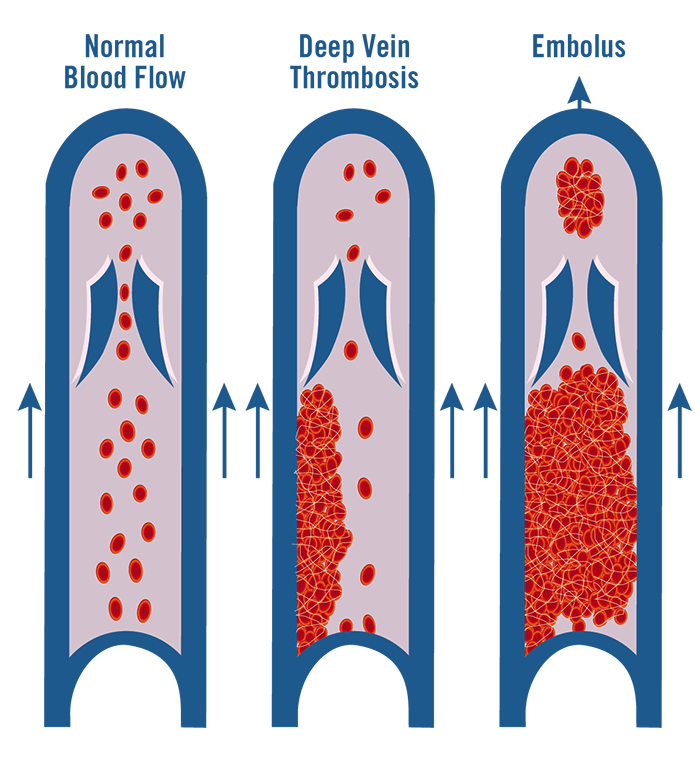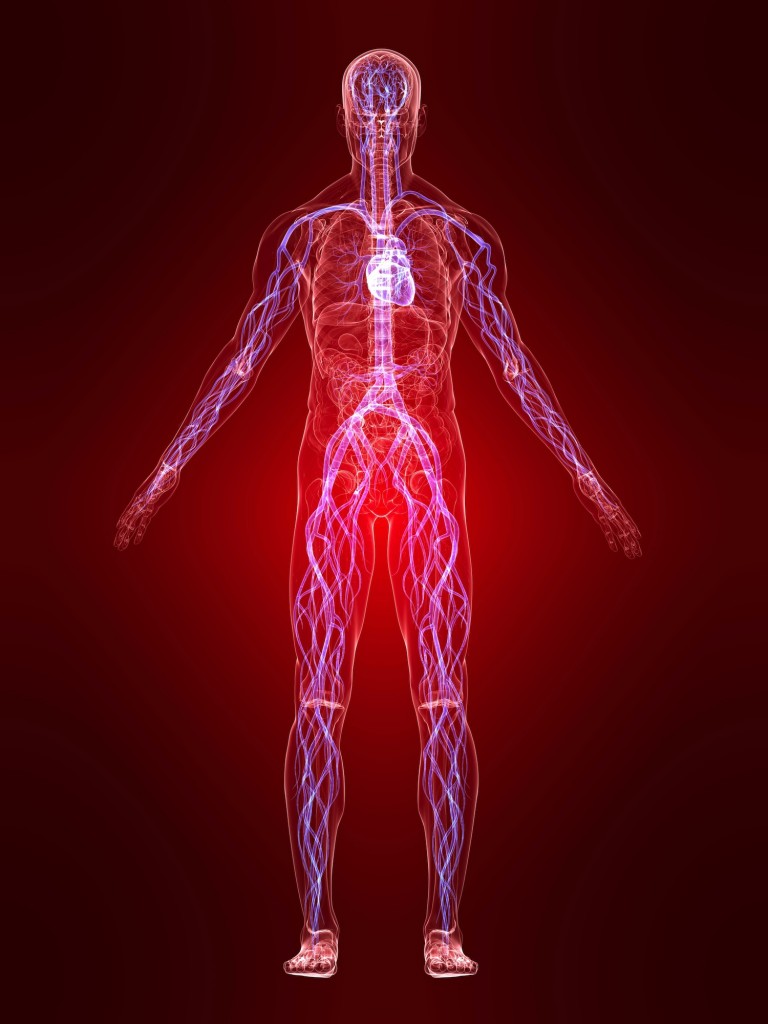Guest post by Dr. Cindy Asbjornsen
You may not be familiar with the word “thrombosis,” but you’ve probably heard the term “blood clot.” Thrombosis is a blood clot that forms in the artery or vein and can cause the world’s top three cardiovascular killers: heart attack, stroke, and venous thromboembolism (VTE).
This October 13th marks the first-ever World Thrombosis Day, a global day of awareness about thrombosis — and VTE, in particular. In Europe alone, half a million people die from VTE each year. In the U.S. and U.K., that’s more than the combined death total from AIDS, highway accidents, and breast and prostate cancer. It is a potentially life-threatening emergency in need of immediate medical attention. And it’s often preventable.
As a vein specialist, I want to do my part to raise awareness through education. So let’s get started!
The average person’s deep vein system carries about 80% of blood from the feet back up to the heart. Deep veins are located in the center of your leg under the muscles and fascia layers (that’s the fibrous tissue that surrounds the muscles). The system is under a great deal of pressure, because each time you take a step, the muscles around the deep veins squeeze these veins and force the blood “uphill,” or back towards your heart, against gravity.
When a blood clot forms in one of the large veins — usually in one of the lower limbs, such as the thigh or calf — leading to either partially or completely blocked circulation, this is called a deep vein thrombosis (DVT). Symptoms may include pain, tenderness, swelling or discoloration of the affected area, and skin that is warm to the touch, although only about half of people with DVT experience any of these symptoms.
A clot in a deep vein can be dangerous because the high pressure could cause the clot to “let go,” or break free from the vein wall and enter the blood stream. The clot could then travel up through the legs, through the major vessels in the abdomen, and into the vena cava (that’s the large vein that empties directly into the heart). The heart would immediately pump the clot to your lungs, which would act like a filter and catch the clot. This is called a pulmonary embolism (PE).
A PE can be fatal, depending on the size and location of the clot. (If your heart has any wall defects, the clot could travel to the brain, instead of the lungs, resulting in a stroke.) Patients with PE may experience shortness of breath, an apprehensive feeling, chest pain, rapid pulse, sweating or a bloody cough.
Together, the conditions of DVT and PE are referred to as venous thromboembolism or VTE.
A blood clot in the leg and lungs can happen to anyone at any age. Some people do not have any warning signs or symptoms, so it’s important to know the risk factors. The main triggers for the formation of blood clots are:
• Prolonged immobility from hospitalization, bed rest or long-distance travel. In fact, being in the hospital for an extended time leads to more than 2/3 of all cases of blood clots in the leg.
• Patients with damage to their vein walls because of injury or surgery (especially hip and knee surgery)
• Those with blood-clotting issues due to an acquired state like cancer or pregnancy, or because of a genetic disorder
This is, by no means, a complete list. Older adults, as well as those with a family history of blood clots, are also at risk. And it’s important to remember that risk factors can be compounded. For example, combining recent hip surgery with a long airplane flight can raise the risk of developing thrombosis. However, having multiple risk factors doesn’t mean you will definitely get a blood clot.
Visit www.worldthrombosisday.org to find out more about VTE, the risk factors, signs and symptoms, and how to prevent thrombosis.
To learn more about how doctors in Maine are detecting and treating blood clots, listen to this episode of Maine Calling. I discuss the topic with two of my colleagues: Dr. Paul Kim, Assistant Director of Vascular & Interventional Services for Spectrum Medical Group, and Dr. Wesley Zemrak, Doctor of Pharmacy and Anti-Coagulation Specialist at Maine Medical Center.
Why October 13th?
Just a quick note about why October 13th was chosen for World Thrombosis Day. It is the birthday of Rudolf Virchow, a German physician and scientist born in 1821. He first developed the concept of “thrombosis” and documented that blood clots in the pulmonary artery can originate from a blood clot in the deep vein system.
Now, every medical student across the globe has had to learn what’s become known as “Virchow’s triad.” Briefly, Virchow’s triad describes the three broad categories of factors that are thought to contribute to thrombosis:
• Hemodynamic changes – Alterations in normal blood flow, including decreased blood flow due to immobility
• Endothelium damage – Trauma to any blood vessel due to surgery, or even bumping into something
• Hypercoagulable state, An abnormal tendency toward blood clotting, which can happen during pregnancy, cancer, or congenital disorders
Virchow first formulated his ideas about thromboembolism in 1856 (although he never technically suggested a triad to describe the way venous thrombosis develops) the basic principles still apply. In fact, compare it with the list of main triggers for blood clot formation above. Look familiar?
Dr. Cindy Asbjornsen is the founder of the Vein Healthcare Center in South Portland, Maine. Certified by the American Board of Venous and Lymphatic Medicine, she cares for all levels of venous disease, including spider veins, varicose veins and venous ulcers.



Leave A Comment